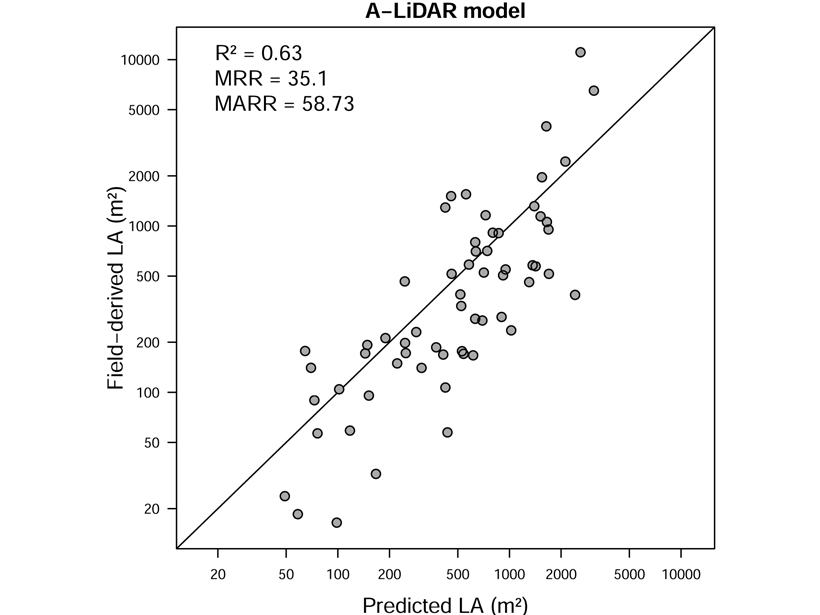Source: Geophysical Research Letters
Canopy leaf area is a vital dynamic property characterizing ecosystem productivity and energy, water, and carbon exchanges with the atmosphere. It is commonly used in the form of leaf area index (LAI), the total one-sided leaf area divided by a unit horizontal surface area. A “textbook expectation” for LAI in tropical forests is to be in the order of 5–6.
Using data from dozens of destructively sampled trees from a tropical biome in southeastern Cameroon, Sirri et al. [2019] suggest that LAI is much higher, calling for serious reevaluation of our theoretical and numerical models of tropical forests.
Models predicting leaf areas are developed that rely on tree characteristics typically measured in forest inventories or can be obtained with remotes sensing methods. The inferences of this study thus have broad implications for understanding tropical forest function, remote sensing sciences, and predictive biogeochemical and hydrological models.
Citation: Sirri, N. F., Libalah, M. B., Momo Takoudjou, S., Ploton, P., Medjibe, V., Kamdem, N. G., et al. [2019]). Allometric models to estimate leaf area for tropical African broadleaved forests. Geophysical Research Letters, 46. https://doi.org/10.1029/2019GL083514
—Valeriy Ivanov, Editor, Geophysical Research Letters
Text © 2019. The authors. CC BY-NC-ND 3.0
Except where otherwise noted, images are subject to copyright. Any reuse without express permission from the copyright owner is prohibited.

